Exploring Non-Surgical Options for Certain Skin Concerns
- Discuss potential cosmetic considerations compared to other approaches.
- Understand the cost structure of different management plans.
- Explore options suitable for managing larger areas of skin.
- Management plans can be tailored for various areas, including the face and body.
- Learn about the expected duration and follow-up care for different options.
- A thorough assessment is conducted to determine suitability for specific skin lesions.
Consultations for sun-damaged skin involve a discussion about management options, which may include the use of medicated creams that are applied to the skin, either in the clinic or at home. The three options that may be discussed at Shellharbour Skin are Imiquimod cream (used in Consultations for Actinic Keratosis), Fluorouracil (used in Pre-cancerous Lesion Management), and Aminolevulinic Acid (ALA), which is activated by light in a process known as Light-Activated Skin Therapy (PDT).
These consultations can help you understand options for managing the appearance of sun-damaged skin, as well as addressing pre-cancerous lesions, actinic keratoses, and certain superficial skin conditions like Bowen’s disease and superficial basal cell carcinomas. Common areas of concern include the face, décolletage, and hands. We can also discuss options for other body areas as needed.
Dr. Barney Gordon completes a comprehensive skin check prior to recommending any management plan. Dr. Barney may take biopsies to confirm the diagnosis of lesions if required to ensure the most appropriate course of action is discussed.
Table – Consultations for Sun-Damaged Skin at a Glance
Suitable For: Assessing concerns such as sun damage, solar keratosis, and certain superficial skin conditions.
Process Duration: 3 hrs for PDT, 28 days for a Fluorouracil plan, 6 weeks for an Aldara plan
Number of sessions recommended: Varies
Follow-up schedule: Varies based on the individual management plan.
Downtime and Comfort: Varies
Cost: $
Consultations for sun-damaged skin involve a discussion about management options, which may include the use of medicated creams that can be applied to the skin, either in the clinic or at home. The three options that may be discussed at Shellharbour Skin are Imiquimod cream (used in Consultations for Actinic Keratosis), Fluorouracil (used in Pre-cancerous Lesion Management), and Aminolevulinic Acid (ALA), which is activated by light in a process known as Light-Activated Skin Therapy (PDT).
These consultations can help you understand options for managing the appearance of sun-damaged skin, as well as addressing pre-cancerous lesions, actinic keratoses, and certain superficial skin conditions like Bowen’s disease and superficial basal cell carcinomas. Common areas of concern include the face, décolletage, and hands. We can also discuss options for other body areas as needed.
Dr. Barney Gordon completes a comprehensive skin check prior to recommending any management plan. Dr. Barney Gordon may take biopsies to confirm the diagnosis of lesions if required to ensure the most appropriate course of action is discussed.

Management Options for Sun-Damaged Skin
Consultations for Actinic Keratosis (Imiquimod Cream)
During your consultation, a management plan may be discussed that involves the use of a topical cream containing Imiquimod 5%. You would be instructed to apply the cream at night before bed, with the frequency and duration of use prescribed depending on the specific concerns being addressed. A typical plan may last for 6 weeks, followed by a period of healing. An inflammatory response is an expected part of the process, and the nature of this response will be discussed during your consultation. The treated areas may peel, blister and scab over as the process takes effect, addressing the targeted cells over the course of the plan.
Pre-cancerous Lesion Management (Fluorouracil Cream)
Consultations may explore the use of Fluorouracil cream for managing sunspots and certain superficial skin concerns. This approach is designed to target specific cells. After 5 to 10 days of application, the sun-damaged parts of the treated skin may become red and scaly. As the process continues, these areas may develop sores and crusts. This skin response is part of the process of addressing the targeted defective skin cells. A typical plan involves applying the cream at night for 28 days.
General timeline for a management plan involving Fluorouracil:
- Week 1: Mild redness may be experienced.
- Week 2 to 3: The area may appear red, crusted, and feel uncomfortable.
- Week 3 to 4: Peeling and blistering may occur.
You may notice redness and inflammation in nearby areas of skin that did not appear to have any initial abnormalities. This can be due to invisible abnormal cells in your skin. The extent of redness and inflammation can vary from person to person depending on the area being managed.
Light-Activated Skin Therapy Consultations (PDT)
PDT is an in-clinic option for managing sun damage (solar keratoses) and certain shallow skin concerns (superficial BCCs). This is an in-clinic process offered at Shellharbour Skin. The process typically comprises two appointments on the same day, approximately 3 hours apart. During your first appointment, our staff will cleanse the area and apply a cream and dressing to your skin. At your second appointment 3 hours later, the doctor will remove the dressing and cream, and then place the area under a large, powerful LED light that activates the cream. The activated agent selectively targets the specific cells of concern. The potential cosmetic aspects of PDT will be discussed during your consultation, along with its primary function of addressing the targeted cells.
Key Considerations for These Consultations:
- Provides a non-surgical pathway to discuss managing sun damage and certain skin cancers.
- The consultation will cover the different side effect profiles, including the potential for pigmentation changes compared to other methods like cryotherapy.
- Involves an efficient in-clinic consultation with Dr Barney Gordon.
- Some management plans can be followed from the comfort of your home.
- A detailed discussion of the potential cosmetic considerations for your skin’s appearance, particularly with options like Light-Activated Skin Therapy.
Frequently Asked Questions
Is a skin check required before starting a management plan?
Yes. All patients need to be reviewed by Dr Barney Gordon prior to any management plan being recommended.
I have already seen another doctor and have biopsy results. Can I book a consultation?
Absolutely. Talk to the reception team, who will arrange an appointment for you to discuss your options with us.
I still have so many questions. Who should I talk to?
Booking a consult with Dr Barney Gordon is the place to start. During your consult, he will assess your skin and answer all your questions.
Sounds great. Where do I start?
Before undergoing any procedure, you must register at our Shellharbour clinic for an initial consultation with our qualified clinical team. During your consultation, you will discuss your lifestyle and health, including medical history, allergies, and any medications or supplements you may be taking. It is important to mention any allergic reactions to drugs or skin care products you may have experienced in the past and any other recent aesthetic or medical procedures you’ve had. These factors can affect how your body responds.
If you have any concerns, a consultation is the ideal time to ask questions. Your clinician will ask about your current problems and reasons for seeking a consultation and will evaluate the area of concern. You should discuss what you hope to explore and your aesthetic goals. All the information you provide during the consultation is essential to developing a customised plan that considers your health, concerns, and expectations, helping you make an informed decision.
What to Expect During a Topical Management Plan?
Whether your plan involves Imiquimod cream, Fluorouracil cream or PDT, it is common to experience significant skin reactions during the process. During this time, the area of your skin being managed will likely look and feel irritated. The redness, inflammation, irritation, crusting, and peeling you may see are signs that the chosen management plan is interacting with the targeted cells as expected. While this stage might be uncomfortable, it is important that you do not stop the management plan without checking with your doctor first.
It is important to practice rigorous sun avoidance in the weeks during and after a topical management plan. For this reason, we typically advise undertaking this process during the cooler months of the year wherever possible.
If you have a question, get in touch and one of our staff will be in touch shortly.




